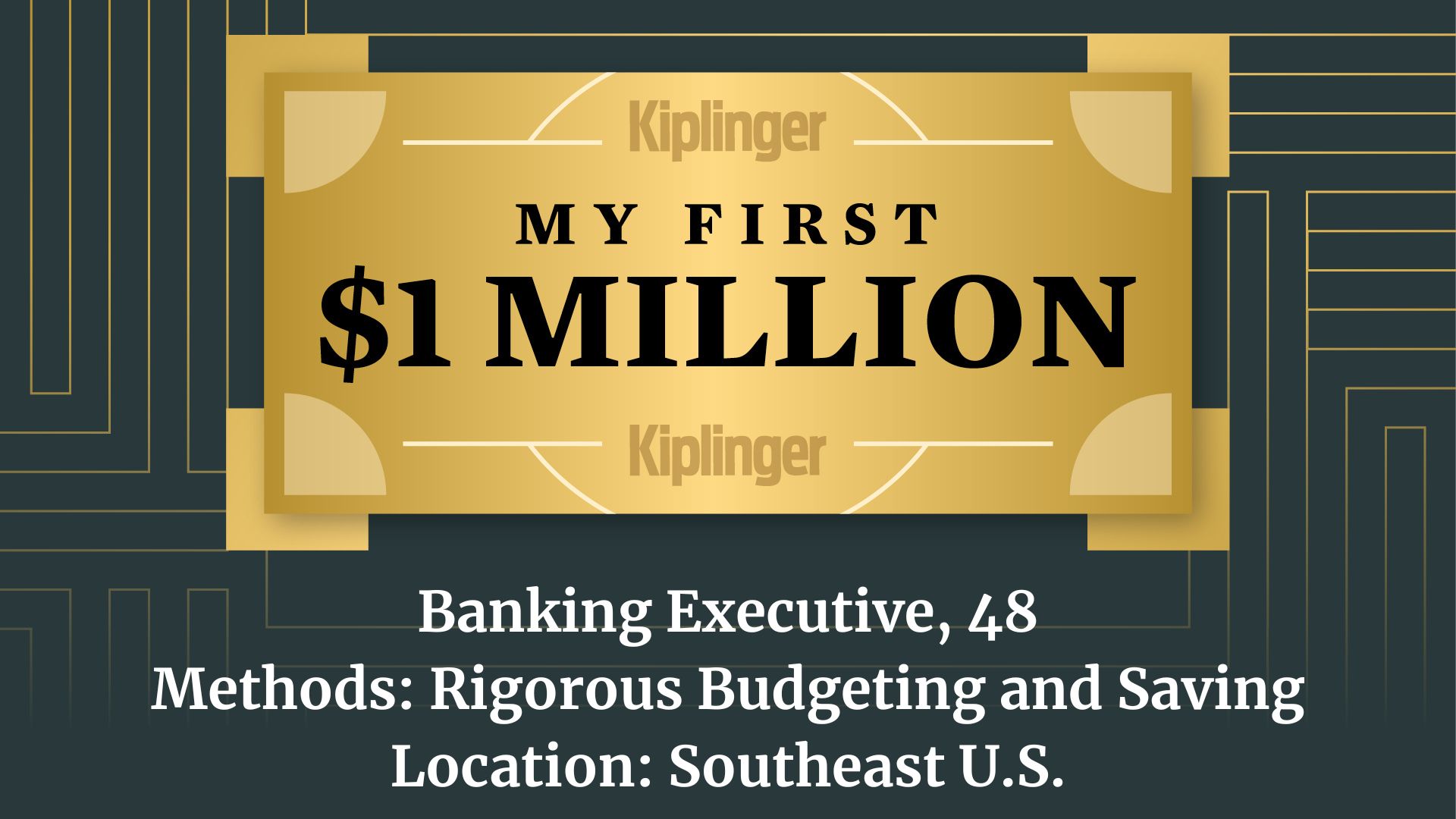Striking Gold (or Gas): A Financial Pro Unpacks the Nuances of Energy Investing
Investing in the energy industry, particularly oil and gas, involves understanding the facts about how projects generate returns through cash flow and long-term asset building, while also being aware of the risks.


The energy industry is one of the most-talked-about areas of the global economy. It's also one of the most misunderstood.
Oil and gas fuel nearly every aspect of modern life, from cars and planes to plastics and fertilizers, yet the public conversation often veers into extremes.
On one end of the spectrum are claims that renewable energy will soon make fossil fuels irrelevant. On the other are stories of instant wealth from oil wells that strike it big.
From just $107.88 $24.99 for Kiplinger Personal Finance
Become a smarter, better informed investor. Subscribe from just $107.88 $24.99, plus get up to 4 Special Issues

Sign up for Kiplinger’s Free Newsletters
Profit and prosper with the best of expert advice on investing, taxes, retirement, personal finance and more - straight to your e-mail.
Profit and prosper with the best of expert advice - straight to your e-mail.
Kiplinger's Adviser Intel, formerly known as Building Wealth, is a curated network of trusted financial professionals who share expert insights on wealth building and preservation. Contributors, including fiduciary financial planners, wealth managers, CEOs and attorneys, provide actionable advice about retirement planning, estate planning, tax strategies and more. Experts are invited to contribute and do not pay to be included, so you can trust their advice is honest and valuable.
The reality is more nuanced. For investors, the real challenge lies in separating fact from fiction and understanding how oil and gas projects create value.
How energy projects generate returns
At its core, an oil and gas project is about converting underground resources into products the market demands.
A project's economics depend on how much oil or gas can be produced, the price it can command and how efficiently it's brought to market.
Returns generally come in two forms:
Cash flow. This is the income generated as oil and gas are sold, with distributions going to investors once operating expenses are covered.
Long-term value creation through asset building. This occurs as new wells are drilled, reserves grow and technology or operational improvements enhance performance.
Over time, these developments compound, building a stronger, more attractive asset base. When the time comes to sell, the portfolio can command a multiple on exit, generating significant value beyond cash flow.
In other words, investors might benefit both from steady income and from the capital appreciation that comes when assets are strategically grown and sold for a premium.
The risks beneath the surface
Energy investing isn't without risk. Subsurface geology is never a sure thing, even with advanced imaging and data analysis.
Operational challenges can also arise, in part because drilling and completing wells is complex, requiring technical precision and reliable service providers.
On top of that, oil and gas prices are famously volatile, shifting with global supply and demand in ways that can quickly alter a project's profitability.
Looking for expert tips to grow and preserve your wealth? Sign up for Adviser Intel (formerly known as Building Wealth), our free, twice-weekly newsletter.
Regulatory and environmental factors add another layer of uncertainty. Shifting policies or new compliance requirements can change the economics of a project just as surely as a drop in commodity prices.
What savvy investors watch
Because the stakes are high, investors should look beyond the surface story of any energy deal. The experience of the management team is one of the strongest indicators of potential success.
Operators with a history of executing projects in similar basins bring both technical skill and credibility.
The quality of the geology and the development plan is another essential factor. Projects located in proven basins with a repeatable drilling strategy generally carry less risk than speculative plays in untested areas.
Just as important is alignment of interests: When operators commit their own capital alongside outside investors, their incentives are directly tied to performance.
Transparency and realism also matter. Projects that report clearly and use conservative price assumptions provide investors with a clearer picture of both potential upside and potential downside.
Related Content
- Tax Advantages of Oil and Gas Investments: What You Need to Know
- The Best Energy ETFs to Buy
- Striking Oil in Opportunity Zones: Now Might Be the Best Time to Invest
- How to Find the Best Oil Stocks to Buy
- Kiplinger Energy Outlook: Gasoline Prices Holding Steady
Profit and prosper with the best of Kiplinger's advice on investing, taxes, retirement, personal finance and much more. Delivered daily. Enter your email in the box and click Sign Me Up.

Jay Young is the Founder and CEO of King Operating Corporation, headquartered in Addison, Texas. Jay earned his Bachelor of Business Administration (BBA) degree from Angelo State University. His journey started with various roles that eventually led to the establishment of King Operating Corporation in October 1996. Prior to establishing King, Jay gained experience with roles in both finance and the oil and gas industry. He served as Vice President and a Registered Representative of Texakoma Financial, Inc., worked with stocks and commodities as a Vice President at Dillon Gage and traded stocks at World Market Equities.
-
 How to Safely Open an Online Savings Account
How to Safely Open an Online Savings AccountOnline banks offer generous APYs that most brick-and-mortar banks can't match. If you want to make the switch to online but have been hesitant, I'll show you how to do it safely.
-
 7 Ways to Age Gracefully Like the Best Stock Photo Seniors
7 Ways to Age Gracefully Like the Best Stock Photo SeniorsAs a retirement editor, I've gleaned valuable wisdom (and a lot of laughs) from one older couple that tops the seniors' stock photo charts.
-
 My First $1 Million: Banking Executive, 48, Southeast U.S.
My First $1 Million: Banking Executive, 48, Southeast U.S.Ever wonder how someone who's made a million dollars or more did it? Kiplinger's My First $1 Million series uncovers the answers.
-
 Time to Close the Books on 2025: Don't Start the New Year Without First Making These Money Moves
Time to Close the Books on 2025: Don't Start the New Year Without First Making These Money MovesAs 2025 draws to a close, take time to review your finances, maximize tax efficiency and align your goals for 2026 with the changing financial landscape.
-
 Is Fear Blocking Your Desire to Retire Abroad? What to Know to Turn Fear Into Freedom
Is Fear Blocking Your Desire to Retire Abroad? What to Know to Turn Fear Into FreedomCareful planning encompassing location, income, health care and visa paperwork can make it all manageable. A financial planner lays it all out.
-
 Gold and Silver Shine as Stocks Chop: Stock Market Today
Gold and Silver Shine as Stocks Chop: Stock Market TodayStocks struggled in Friday's low-volume session, but the losses weren't enough to put the Santa Claus Rally at risk.
-
 How to Master the Retirement Income Trinity: Cash Flow, Longevity Risk and Tax Efficiency
How to Master the Retirement Income Trinity: Cash Flow, Longevity Risk and Tax EfficiencyRetirement income planning is essential for your peace of mind — it can help you maintain your lifestyle and ease your worries that you'll run out of money.
-
 I'm an Insurance Expert: Sure, There's Always Tomorrow to Report Your Claim, But Procrastination Could Cost You
I'm an Insurance Expert: Sure, There's Always Tomorrow to Report Your Claim, But Procrastination Could Cost YouThe longer you wait to file an insurance claim, the bigger the problem could get — and the more leverage you're giving your insurer to deny it.
-
 Could a Cash Balance Plan Be Your Key to a Wealthy Retirement?
Could a Cash Balance Plan Be Your Key to a Wealthy Retirement?Cash balance plans have plenty of benefits for small-business owners. For starters, they can supercharge retirement savings and slash taxes. Should you opt in?
-
 Changes Are Coming for This Invesco Bond Fund
Changes Are Coming for This Invesco Bond FundThe Invesco BulletShares 2026 Corporate Bond ETF's bonds will mature in 2026. Here's what investors should do.
-
 7 Retirement Planning Trends in 2025: What They Mean for Your Wealth in 2026
7 Retirement Planning Trends in 2025: What They Mean for Your Wealth in 2026From government shutdowns to market swings, the past 12 months have been nothing if not eventful. The key trends can help you improve your own financial plan.